You might also want to
P9925 Product Used Image Gallery
Classical Facade with Polyurethane Details for Hotel Exterior
Polyurethane Details on a Classical Hotel FacadeThe building's design emphasizes a classical style reinforced with advanced polyurethane details. These elements, including arched motifs, elegant columns, and carved reliefs, create a refined expression of timeless architecture. The repetition of symmetrical window arrangements adds balance, while fine decorative panels bring a distinct identity to the facade.Polyurethane as a material allows flexibility in executing ornaments with sharp precision, ensuring both durability and lightweight application. This makes its use ideal for vertical structures aiming to combine heritage-inspired design with modern construction benefits. The balcony areas include gracefully arched framing, paired with wrought-like balustrades designed through polyurethane molds.The vertical columns echo motifs from Greco-Roman history, subtly referencing Doric and Ionic traditions. This historical nod enriches the visual character while avoiding excessive heaviness. The upper cornices and lower framing contain delicate geometrical motifs that enhance the contrast between surfaces, playing beautifully with daylight shadows.The balanced use of repeated arches, floral engravings, and lattice-inspired reliefs creates a rhythmic composition. Neutral beige color applied to the polyurethane material amplifies elegance while reinforcing the natural brightness of the facade. The result is a striking balance of grandeur, clarity, and functional endurance.Intricately carved panels enhance visual rhythm.Arches and columns establish symmetry and verticality.Polyurethane makes complex designs achievable and sustainable.Light tones accentuate space and freshness. This hotel facade demonstrates the impact of polyurethane in achieving classical ornaments. The design merges arches, fine carvings, and balanced lines for a sophisticated presence. Vertical columns strengthen the overall grand expression. Delicate balcony railings contribute visual depth. The repetition of symmetrical windows enhances harmony. Polyurethane provides adaptable and durable decorative solutions. Geometric reliefs create interplay with light. Beige color tones add natural freshness. Subtle historical references connect to architectural tradition. Structural rhythm generates balance across the facade. Polyurethane ensures practical application for complex motifs. Carved panels introduce vivid surface texture. Arched balconies increase openness and scope. The facade conveys luxury without losing clarity. Overall, it embodies timeless classical elegance.
Polyurethane Exterior Cornice and Decorative Classical Facade Models
Classical Design with Polyurethane Exterior Cornice ModelsThe use of polyurethane in architectural facades has become increasingly popular thanks to its versatility, durability, and decorative potential. In the example above, we see a striking combination of classical columns and ornamental wall features, carefully designed to achieve a timeless look. The fluted columns are topped with richly detailed Corinthian-inspired capitals, highlighted by gilded details that enhance their grandeur.Equally captivating is the wide ornamental panel placed beside the entrance, showcasing a complex network of floral motifs and vine scrolls. These delicate forms create an impression of elegance and fluid motion while serving as a protective yet decorative partition. The material’s lightweight quality makes such patterns easy to install and maintain in comparison to traditional stone or plaster.The window is framed with an elaborate polyurethane surround, decorated with scrolls and keystone-like forms. Together, these elements recall the traditions of Roman and Renaissance architecture, where columns and intricate details were widely used to convey prestige and beauty. Polyurethane reproduces such forms with precision, allowing for both classical aesthetics and modern practicality.In historical note, Corinthian capitals, first developed in ancient Greece and later adapted by the Romans, were characterized by acanthus leaves and scrolls. The modern adaptation here maintains that classical spirit while translating it into contemporary materials. The overall composition shows how decorative panels and moldings in polyurethane bring rich ornamentation to any building facade, merging function with artistry.Durable and weather-resistant materialLightweight and easy installationDetailed reproduction of classical motifsCustomizable finishes in color and texture Polyurethane facade elements provide light yet durable solutions for modern architecture. The design shown demonstrates the use of polyurethane cornices with classical inspiration. Traditional fluted columns with gilded capitals adorn the corners with precision. A decorative screen of floral motifs and curling vines adds rhythm and refinement. The window frame is accented with scrollwork and relief patterns for balance. Polyurethane materials imitate stone and plaster without heavy weight. This makes installation fast, secure, and practical. The gilded details highlight the interplay between white surfaces and gold accents. Decorative screens also serve functional purposes in shading and privacy. The motifs recall ancient Greek and Roman influences. Corinthian capitals historically symbolized luxury and prestige. Today such details enrich facades with cultural depth. Lightweight composition ensures easy handling for builders. Customizable patterns allow unique facade solutions. The mix of decorative panels and moldings enhances architectural harmony. Polyurethane exterior models blend timeless aesthetics with modern efficiency.
Polyurethane Column Capitals and Classical Decorative Models for Interior and Exterior Design
Classical Polyurethane Column CapitalsPolyurethane column capitals bring refinement and durability to decorative architecture. Inspired by the Corinthian and Ionic orders, they often feature sculpted acanthus leaves, fluted bases, and ornate geometric motifs. Unlike heavy stone, polyurethane columns remain lightweight, allowing easier transportation and installation without sacrificing aesthetic richness.These capitals integrate naturally with classical design ideas. The example demonstrates a white polyurethane column, highly detailed with floral curls, geometric scrolls, and symmetrical leaf reliefs. Such details make them ideal for enhancing entrances, framing windows, or providing structural-looking but ornamental support indoors.Historically, columns in marble and limestone were fundamental to Greek and Roman buildings. The polyurethane reinterpretation allows modern designers to recreate that atmosphere with practicality while still expressing architectural elegance.Sizes and ApplicationsPolyurethane column capitals come in varying diameters and heights. Smaller versions accentuate door frames and interior corners, while taller fluted columns transform exterior facades. The crisp grooves along the shafts emphasize verticality and provide depth and shadow play under natural or artificial lighting.Designers often finish columns in pure white for a striking look, but gilded details or subtle patinas can enhance their presence. The combination of white and golden embellishments, as seen in certain decorative capitals, underscores luxury interiors.Decoration IdeasPairing polyurethane capitals with complementary molding, cornices, and pediment frames can create a coherent style. Their lightweight composition means they can be installed even in apartments or commercial interiors with minimal structural burden. A strategic mix of ornamental design with minimalistic surroundings can highlight their patterns without overwhelming the space.Use fluted polyurethane columns at entryways for a grand welcome.Combine with decorative window cornices for cohesive facades.Accentuate gilded capitals in lobbies for dramatic contrast. Polyurethane column capitals combine tradition with modern practicality. They echo classical Corinthian artistry while being light and durable. Their carved acanthus leaves and floral curls provide stunning decorative depth. These versatile pieces enhance both interiors and facades. Installation is effortless compared to heavy stone. The crisp fluted shafts emphasize verticality and elegance. Golden highlights add refinement to white frameworks. Designers use them to frame doors and windows with style. Historical influence brings timeless atmosphere into modern projects. Lightweight materials make them structurally flexible. Geometric detailing enhances ornamental impact. They adapt beautifully across different interior concepts. Decorative reliefs create texture and shadow impact. Polyurethane designs seamlessly integrate with luxury settings. Such classical columns remain ideal for elegant architecture.
Classic Detached Facade Design with Polyurethane Details
Polyurethane Elegance in Facade DesignThe use of polyurethane elements in exterior architecture allows the reproduction of timeless classical motifs with durability and precision. This detached facade employs tall fluted columns that evoke the grandeur of classical Greek and Roman designs, subtly recalling the Corinthian order through their capital details.The balance of vertical and horizontal symmetry is reinforced by ornate balustrades featuring swirling metalwork and framed panels decorated with polyurethane ornaments. The friezes above the windows are embellished with floral motifs and reliefs of flowing curves, creating continuous visual interest across the building’s breadth.Geometric and Decorative HarmonyAt the base of the structure, carefully aligned steps lead to the grand entrance, flanked by detailed columns and sculpted panels. The windows are proportionally organized, each framed by intricate moldings that amplify the sense of unity. Decorative cornices enhance the roofline, while recessed balconies with floral engravings soften the rigidity of geometric composition.Polyurethane as a material provides both lightweight flexibility and resilience, enabling the crafting of precise ornaments that maintain their clarity against environmental factors. Historically inspired by classical facades that relied on stone carvings, this modern approach captures the same grandeur with a contemporary efficiency.Timeless Classical InspirationThe integration of symmetry, fluted columns, and intricate decorative surfaces reflects centuries of architectural evolution. From Renaissance villas that revived Greco-Roman proportions to modern interpretations like this, the language of classical form remains influential. Here, the polyurethane details breathe life into patterns that combine geometry with botanical ornamentation, giving the house a distinguished sense of permanence and grace. This facade design illustrates how polyurethane details enrich classical architecture. The tall columns suggest ancient inspiration. Finely crafted reliefs bring decorative refinement. The floral ornaments create artistic emphasis. Each balcony features scrolling wrought iron harmony. Symmetry unifies the vertical and horizontal rhythm. The moldings highlight proportions with elegance. Cornices carry intricate detail across the top. The decorative panels enhance geometric variety. The soft ivory tone completes the balanced impression. Large windows contrast with the ornate surfaces. The material ensures resistance to weather change. Historical echoes influence the ornamentation. The structure remains cohesive and graceful. Modern fabrication supports traditional artistry. The result defines a timeless architectural statement.
Polyurethane Classic Hotel Facade with Ornamental Columns and Decorative Diversity
Classic Elegance in Polyurethane Facade DesignThe use of polyurethane elements in exterior decoration allows for grand, ornate aesthetics without excessive structural weight. This example demonstrates a classic hotel style, where fluted vertical columns create a sense of harmony and height. Around the window frames, there are elaborate scroll reliefs and finely carved crest-like motifs that add a ceremonial touch.The decorative language balances both geometric precision and organic curves. Spiral ornaments unfold at the base and crown of the columns, while curved pediments above windows echo Baroque-inspired elements. Balcony borders incorporate black frames with gilded vegetal reliefs, giving strong visual contrast. This mixture of matte beige wall surfaces with crisp white details ensures a dynamic facade composition.Historically, such motifs took inspiration from classical Greek and Roman orders, where Doric, Ionic, and Corinthian styles influenced subsequent European architecture. The presence of leafy volutes and acanthus-inspired details recalls the rich tradition of stone carving, while polyurethane allows streamlined production and durability.The result is a design that merges traditional aesthetics with modern construction methods. The ornamental motifs, swirling relief patterns, and gilded railings reinforce a sense of handcrafted artistry, while maintaining weather resistance and longevity. This synthesis makes the facade both practical and distinguished for hospitality architecture. This facade highlights a polyurethane approach that combines ornamental detail with practical durability. The arrangement of columns adds vertical rhythm and a classical hotel atmosphere. Decorative reliefs around windows produce visual depth and invite attention. The golden balcony rails introduce refinement and contrast with the neutral walls. Complex swirl motifs emphasize movement against geometric symmetry. Large crests above windows echo historic Baroque traditions. The fluted shafts carry a sense of timeless stability. White decorative framing enhances the beige base with brightness. Sculptural relief patterns establish elegance. Polyurethane ensures lightweight yet strong performance. The organic scrolls enrich the composition with texture. Architectural repetition strengthens unity. Artistic construction details echo European influences. This design suits urban hospitality projects. Collectively, the elements offer distinction and appeal.
Polyurethane Corbels and Classical Interior Exterior Decoration Models
Polyurethane Corbels in Classical DesignPolyurethane corbels are an essential feature in classical decorative traditions, offering both structural and ornamental value. The array displayed demonstrates how detailed motifs such as acanthus leaves, rosettes, and scrolls can be recreated in durable, lightweight material. These designs take inspiration from Greco-Roman aesthetics, where balance and symmetry were central elements of interior architecture.The geometric precision of these architectural ornaments emphasizes curves, sharp volutes, and layered reliefs, achieving a visual sense of grandeur. The composition shows how different corbel variations can be harmonized inside elegant wall paneling, archways, and ceiling transitions.Application in Interior and Exterior SpacesClassical interior decoration makes extensive use of corbels to support mantelpieces, shelves, and arches while adding ornamental richness. Outdoors, polyurethane elements resist weathering, keeping crisp detail intact without the heavy weight of stone. This makes them adaptable for columns, facades, and entryways, blending decorative luxury with modern practicality.A subtle historical note places these designs within the lineage of Doric, Ionic, and Corinthian forms, where each order refined the relationship between structure and ornament. The polyurethane adaptations bring this heritage into contemporary use with lightweight versatility.Design Inspiration and CompositionThe exhibited wall integrates multiple classical patterns arranged radially, each highlighting distinct fluting, floral carving, and scroll combinations. The repetition of decorative motifs creates rhythm while shadow enhances dimensional contrast. Such arrangements inspire designers to explore both functional and purely ornamental applications within modern spaces.Lightweight yet detailed formsVaried historical referencesAdaptability to multiple settingsRefined geometric and floral motifsThrough their intricate details, polyurethane corbels merge practicality with artistry, ensuring classical elegance remains accessible in both residential and commercial projects. Polyurethane corbels provide a refined solution for timeless classical decoration. These ornamental elements combine structural form with artistic detail. Lightweight material ensures installation flexibility in diverse settings. Intricate motifs include scrolls, acanthus leaves, and rosettes. Symmetry and balance dominate the composition on walls and ceilings. Historical references evoke Greco-Roman architectural heritage. The white finish highlights depth through shadow and relief. Such architectural ornaments adapt well to both interior and exterior projects. Decorative patterns add rhythm while maintaining elegance. Polyurethane resists weathering better than traditional stone carvings. Designers appreciate the versatility and ease of adaptation. Wall panels, archways, and facades gain richness through corbel placement. Motif repetition reinforces classic style in contemporary spaces. Each arrangement serves as inspiration for new interior design. The use of these decorative elements ensures enduring sophistication in modern applications.
Polyurethane Exterior Window Trim Models with Classical and Modern Elegance
Polyurethane Exterior Window Trim DesignPolyurethane exterior window trims present an elegant transition from simple frames to sophisticated architectural accents. The highlighted model shows classical detailing with floral and scroll motifs placed symmetrically around a rectangular window. Decorative corbels under the sill support the frame, combining both functional and aesthetic elements.The intricate carvings with ornamental curves and leaf-like grooves echo the grandeur of historic villas. The cornice above the window features elaborate spiral patterns, enhancing the depth and three-dimensional effect. Balanced proportions between vertical fluted lines and curved forms achieve coherence within the façade design.Geometric and Decorative MotifsThis particular trim emphasizes symmetry through mirrored side elements and rhythmic carving repetitions. The fluted pilasters frame the window vertically, while volutes and foliage-inspired motifs enrich the upper cornice. A horizontal sill with detailed corbels below ensures architectural balance.Historically, such decorative design elements can be traced to classical architectural languages, especially the Baroque and Rococo periods, where lavish details elevated façades into expressions of prestige. Today, polyurethane allows these motifs to be lighter, more durable, and easier to install than stone or plaster.Modern IntegrationWhile deeply rooted in classical villa traditions, the material’s adaptability permits modern integration. Simple architectural lines can be merged with these detailed ornaments to harmonize with contemporary exteriors. The flexibility of polyurethane provides lasting durability in different climatic conditions while maintaining aesthetic prominence. Polyurethane window trims deliver elegance with classical motifs and durable materials. They combine tradition with modern practicality. Decorative scrolls create richness in design. Fluted pilasters add vertical rhythm. Ornamental corbels strengthen architectural details. Intricate patterns reveal artisan inspiration. Symmetrical layout ensures balance. Strong material choice guarantees longevity. Light structure aids installation ease. Classical villa influence enriches façades. Modern construction techniques support adaptability. Leaf motifs enhance decorative appeal. Balanced lines provide architectural harmony. Polyurethane enables versatile applications. Such trims transform windows into statement features.
Jamb Materials in Hotel Exterior Decoration Details Offering Aesthetics and Elegance Together
Jamb materials in hotel exterior decoration are important details that offer aesthetics and elegance together Choosing color and pattern preferences application areas and advantages will be discussed Jamb materials can reflect the character of the hotel by providing an impressive appearance in areas such as hotel entrance doors facades windows and terraces Various jamb material options application examples and inspiring design ideas will be shared in the article In addition to creating an elegant and stylish atmosphere it can strengthen the brand identity of the hotel You will find information and tips on the use of jamb materials in our article and you will find inspiring ideas
Classic Hotel Facade with Polyurethane Details for Elegance and Durability
Polyurethane in Classical Facade DesignThe use of polyurethane elements in facade design has transformed the way architects recreate historical elegance while enhancing structural durability. The hotel facade highlights classical inspirations through tall, fluted columns with Corinthian-style capitals, ornate cornices, and decorative reliefs. Each detail is precisely crafted, offering a balance between grand aesthetic appeal and weather-resistant practicality. Historically, such motifs date back to ancient Greece and Rome, where column orders like Doric, Ionic, and Corinthian introduced rhythm, geometry, and depth into facade compositions. The integration of modern polyurethane ensures these forms endure without compromising quality.Geometric Patterns and Decorative MotifsThe facade embraces a harmony of geometric elements such as rectangular window frames, layered cornices, and proportional column spacing. Around the frames, finely molded ornaments with floral details and textured borders reflect a mastery of symmetry, offering subtle elegance in every layer. The interplay of vertical and horizontal components creates rhythm across the surface, making the exterior visually engaging from every angle. These details also echo a long tradition of architectural ornamentation, where motifs communicated grandeur, permanence, and cultural refinement.Durability and Modern ApplicationPolyurethane contributes not only ornamental refinement but also modern durability. Unlike traditional plaster, polyurethane withstands environmental factors such as temperature changes and moisture, ensuring the crisp details of each motif are preserved over time. This blend of strength and artistry makes it suitable for hotels aspiring to embody the grandeur of classical architecture while offering a sustainable exterior solution. The ivory-white palette enhances shadow play on the details, intensifying the perception of depth and maintaining uniform luminosity throughout the day.Design Inspiration for HotelsFor hospitality projects, a classical polyurethane facade communicates prestige and elegance. The structural motifs, relief details, and column sequences elevate the visual identity, offering guests a sense of grandeur from the first impression. Architects and designers seeking inspiration can adopt similar strategies by emphasizing ornamental framing, geometrical balance, and repetition of historic design formulas. The result is an architectural language that remains timeless while benefiting from the protective qualities of modern materials. The classic hotel facade uses polyurethane to combine historic elegance with modern resilience. Columns shaped with ornaments provide rhythm and richness to the structure. Decorative motifs set around windows highlight intricate craftsmanship. The facade balances proportion and symmetry through bold geometric framing. Each cornice is layered to define depth and shadow. Polyurethane ensures long-lasting durability against weather conditions. Classical influences from Greece and Rome enrich the aesthetic. The ivory palette emphasizes clarity of reliefs and texture. Cornices project strong visual lines across the building. Window borders integrate floral patterns enhancing subtle refinement. The entrance is defined by fluted shafts and ornate capitals. Guests encounter a striking sense of classical grandeur. Hospitality design benefits from repeating balanced motifs. Modern techniques protect while preserving tradition. The facade demonstrates how history and innovation create architectural distinction.
Polyurethane Classical Exterior Cornice and Column Decoration Designs
Timeless Classical Inspiration with Polyurethane FacadesPolyurethane exterior elements successfully capture the classical aesthetic that has defined monumental buildings for centuries. Intricate designs, including floral motifs, scrollwork, and relief patterns, emphasize symmetry and elegance. This particular facade combines polyurethane strength with artistic detailing, from Corinthian-like capitals to linear pilasters.Above the window frames, ornate relief bands filled with vine and leaf compositions create a continuous decorative rhythm. The balcony railings add contrast with dark wrought-iron patterns of swirling curves, enhancing the golden textures of the polyurethane backdrop. The detailed cornices, with their overlapping foliage and spiral scrolls, reflect influences from ancient Greek and Roman decoration.Polyurethane modeling allows fine details such as ornamental leaves, acanthus scrolls, and curved arabesques to remain clear and precise under different lighting conditions. The combination of pilasters and capitals anchors the structure visually while granting a strong sense of order. Window frames surrounded by carved motifs highlight the interplay between functional and decorative design elements.Historically, classical motifs with acanthus leaves were common in Corinthian order architecture, originating in ancient Greece and later popularized by Roman builders. In contemporary design, polyurethane offers an accessible material to reproduce these intricate details without the challenges of stone carving. This balance of tradition and innovation continues to enrich architectural identity today.Elegant capitals with scroll and leaf detailsTextured relief cornices with floral patternsWrought iron balcony railings with curved geometriesDurable polyurethane material with detailed finish Polyurethane exterior decorations bring classical beauty to modern buildings. Columns with Corinthian-inspired capitals add refined detail. Window cornices are framed with carved motifs. Wrought iron railings show elegant curving geometries. Polyurethane provides durable surfaces suited to outdoor use. The facade features continuous reliefs with vine and leaf compositions. Balanced symmetry highlights grandeur. This style reflects both Greek and Roman traditions. Acanthus leaves emphasize ornament. Pilasters create vertical harmony. Ornate scrolls decorate frame edges. Warm golden tones enrich the design. Strong lines structure visual order. Decorative precision enhances identity. The combination of tradition and modern material makes polyurethane a versatile solution.
Polyurethane Classical Hotel Exterior Cladding and Decorative Facade Design
Classical Expression with Polyurethane CladdingThe presented hotel facade design demonstrates how polyurethane cladding can beautifully replicate classical motifs while ensuring long-lasting performance. Tall vertical elements are emphasized by fluted columns with Corinthian capitals, seamlessly blending tradition with modern construction practices.The building’s entrance is marked by a grand arched doorway framed with ornate pilasters. Above, a triangular pediment adds a sense of dignity and classical balance. Between the columns, wide rectangular windows framed with decorative trims provide symmetry and rhythm across the facade.Geometric Ornaments and Decorative DetailsDelicate lattice-style relief panels introduce intricate geometric motifs alongside the smooth facade surfaces. Stylized leaf patterns along the cornices reference classical friezes, creating a strong historical continuity. These details not only enhance aesthetics but also help break the scale of the building into harmonious layers.The use of polyurethane elements enables lightweight construction and tolerance to weathering. Compared to stone, these materials provide flexibility while retaining the elaborate look of authentic hand-carved ornamentation.A Timeless Architectural DialogueThe design draws inspiration from Renaissance and Baroque classical traditions, visible in the fluted shafts, decorative entablatures, and ornamental frames. Such details evoke historic urban palaces, reinterpreted for contemporary hotel use. With polyurethane, these elements are achieved efficiently and with precise repetition.Durable polyurethane finish for outdoor useClassical symmetry through tall columnsDetailed friezes and sculptural motifsLarge glass windows with balanced proportionsThis blend of history and technology results in a durable, elegant, and memorable hotel facade design. This hotel facade design demonstrates classical style through polyurethane cladding. The entrance features a majestic arched doorway framed by columns. Fluted shafts and Corinthian capitals create vertical rhythm. Above the entrance sits a triangular pediment. Horizontal cornices carry stylized leaf ornaments. Decorative lattice panels reveal detailed geometric motifs. Large rectangular windows provide order and proportion. Balcony railings crafted with wrought iron enhance refinement. The light facade tone highlights symmetry. Polyurethane ensures strength and lasting resistance. Historic Renaissance influences enrich the visual effect. Baroque expression adds ornamental richness. The composition balances tradition and modernity. Advanced materials recreate the look of carved stone. This design is ideal for sophisticated urban hotels.
Polyurethane Facade Decoration and Color Selection for Classic Hotel and Building Designs
Polyurethane in Facade DecorationThe use of polyurethane elements in exterior decoration has become a key solution for achieving both durability and ornamentation. In this building facade, finely crafted vertical columns and pilasters demonstrate how classical inspiration can be paired with modern construction needs. The light beige color applied on the main surface highlights the intricate frames and cornices around the windows.Color Selection for EleganceSelecting the right color is essential for maintaining aesthetic integrity. Neutral tones such as beige or ivory provide a backdrop that accentuates the ornamental moldings. Subtle use of contrasting dark metals on balcony railings adds depth to the composition. The balance between light stone-like walls and dark metallic decoration ensures a refined visual outcome.Classical Design DetailsThe facade integrates geometric panels, floral motifs, and detailed horizontal cornices. These elements reflect a lineage from European classical architecture, where pilasters and window frames were symbols of grandeur. A historical note is that such decorative pillars trace back to Corinthian and Ionic orders, blending structural stability with artistry.Practical TipsChoose light and warm tones for large facade surfaces to emphasize the architectural motifs.Use darker balcony railings for elegant contrast and visual rhythm.Ensure alignment of decorative frames to preserve symmetry across stories.Select weather-resistant coatings to maintain polyurethane details over time.By respecting these principles, the facade creates a coherent language of design that enhances both residential and hotel exteriors. Polyurethane is widely valued for adding strength and artistry to classical facades. The building facade features ornamental balcony railings that complement the light beige architectural base. Using subtle neutral colors enhances the appearance of intricate moldings. Decorative columns introduce a visual rhythm that strengthens symmetry. Neutral beige tones serve as a timeless choice for such structures. Dark railing details highlight the ornate frame of windows and balconies. The geometric layout of panels provides balance across floors. Pilasters with subtle motifs recall the elegance of Corinthian architecture. Carefully chosen colors prevent the facade from appearing heavy. The material’s durability ensures resistance to weather conditions. Metal accents work to emphasize the curve of scroll-inspired forms. Architectural identity is boosted through harmonious detailing. Classic design elements combined with polyurethane ensure functional resilience. Modern construction benefits from pairing historical inspiration with durable materials. In total, careful design and thoughtful color selection turn a building into an enduring architectural statement.
Elegant Classical Villa Design with Polyurethane Exterior Profiles
Polyurethane Facades in Classical Villa DesignThe use of polyurethane in exterior architecture allows classic villa designs to maintain timeless elegance while benefiting from modern durability. This material adapts easily to ornate detailing and provides resistance against weathering, making it ideal for richly profiled facades.The villa shown reflects a symmetrical arrangement where window frames are adorned with decorative profiles featuring intricate curvilinear motifs and fine geometric repetition. Above the windows, floral-inspired scrollwork adds a layer of refinement, emphasizing harmony between proportion and ornament.The prominent upper cornice displays continuous relief bands in meticulous linear motifs, creating visual rhythm along the horizontal axis of the facade. Supporting the grand balcony and entrance are fluted columns capped with Corinthian-influenced capitals, a design element with roots in ancient Greek and Roman architecture where such details symbolized strength and sophistication.The exterior finish combines sleek white walls with grey-toned ornamental elements. This contrast highlights the sculptural quality of polyurethane moldings. The subtle interplay between smooth surfaces and detailed reliefs ensures a balance between minimalism and baroque richness.Classical villa design using polyurethane decoration offers versatility: lightweight installation, durable performance, and aesthetic excellence. With precise measurements, modern CNC-cut components can replicate historic designs reliably, ensuring both traditional authenticity and contemporary practicality.Window frames enhanced with curvilinear motifsCornices featuring rhythmic repeating patternsFluted columns resembling Corinthian traditionsPolyurethane material ensuring lightweight yet durable detailingThis fusion of history and technology allows classical motifs to remain relevant, giving modern villas the distinguished presence of traditional European architecture. This villa design demonstrates how polyurethane can bring timeless style to classical facades. The profiles around windows carry ornamental scrolls that add depth. The cornices feature repeating reliefs with subtle geometric accents. Fluted columns rise in symmetry to support upper levels. Their capitals show Corinthian-inspired details with elegance. The combination of white wall surfaces and grey moldings achieves visual contrast. This balance enhances the sculptural effect of the facade. Polyurethane allows these details to remain durable against weather. The lightweight properties make installation efficient. Decorative elements retain authentic classical charm. The overall rhythm of geometry emphasizes structure and order. Historic references to Greek and Roman architecture are visible in column design. Each motif is carefully arranged to guide perception. The horizontal cornice lines harmonize with vertical supports. Such integration highlights the versatility of modern materials. The result is a refined villa exterior that radiates sophistication.
P9925 Polyurethane Corbel Design
The P9925 corbel is an elegant decorative piece that enhances the feeling of spaciousness in small interiors. Made from polyurethane, it brings together durability and artistry in a single form.
The design features flowing curves and leaf motifs with scroll-like details, creating a sculptural effect that brightens any room. Its refined geometry combines functionality with classical design elements, balancing modern interiors with historical depth.
Historically, corbels were key architectural details in ancient Greece and Rome, as well as medieval Europe, often doubling as both support and ornament. In a similar way, the P9925 draws inspiration from these traditions while interpreting them in a contemporary style.
- Lightweight yet highly durable material
- Smooth finish suitable for painting
- Ideal for shelves, cabinets, or wall decoration
As an anecdote, master builders of past centuries carved corbels with symbolic elements to reflect beliefs or strength, ensuring that their homes and buildings carried meaning as well as beauty. The P9925 continues this heritage with a modern touch.
The P9925 corbel offers elegance and versatility in modern interiors. It is designed from lightweight polyurethane yet maintains impressive durability. Small rooms benefit greatly from its ability to add depth and character. The carving follows soft lines that suggest classical refinement. Its scroll-like shapes create movement within a static form. This design blends history with modern use, making it timeless. The corbel can support shelves while acting as refined decoration. It reflects traditions of classical design seen in European architecture. Because of its artistic detailing, rooms feel more dynamic. The piece adapts to both contemporary and historical settings. Its use in cabinets and walls extends flexibility. The surface finish allows easy painting for customization. A short anecdote recalls medieval homes where symbolic corbels represented strength. Incorporating the P9925 enhances both style and structural balance. Its elegant leaf motifs preserve heritage while brightening modern homes.
Elegant P9925 Corbel Model for Spacious Room Decoration
The P9925 corbel is crafted from durable polyurethane and designed to bring elegance to small interiors. Its flowing leaf-like carvings and symmetrical scroll motifs evoke a sense of balance and artistry. Corbels have been used throughout history, especially in classical Greek and Roman architecture, where they supported balconies, shelves, and beams while also contributing aesthetic appeal. This model continues that tradition by combining practicality with timeless design. A short anecdote tells us that in medieval Europe, corbels were often adorned with symbolic carvings to reflect the beliefs or status of the household, making them more than just structural supports. Today, the P9925 corbel carries forward that artistic heritage while enhancing rooms with a clean, crisp, and airy impression. Perfect for those who want to add decorative depth to shelves, cabinets, or walls, this corbel not only improves functionality but also enriches space with artistic refinement.
p9925 corbel, polyurethane corbel, decorative corbel, classical corbel design, ornate corbel, architectural corbel, modern corbel, wall corbel, shelf corbel, cabinet corbel, interior corbel, small room decoration, elegant corbel, sculpted corbel, corbel design
No reviews found!








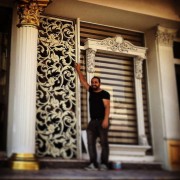




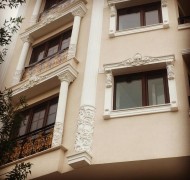


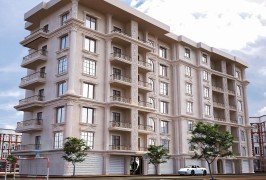

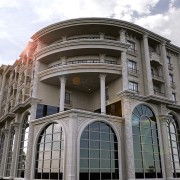



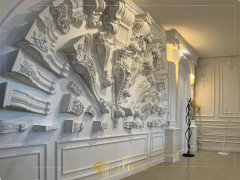



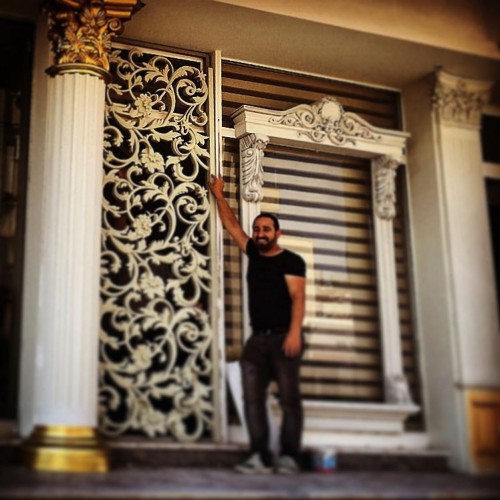

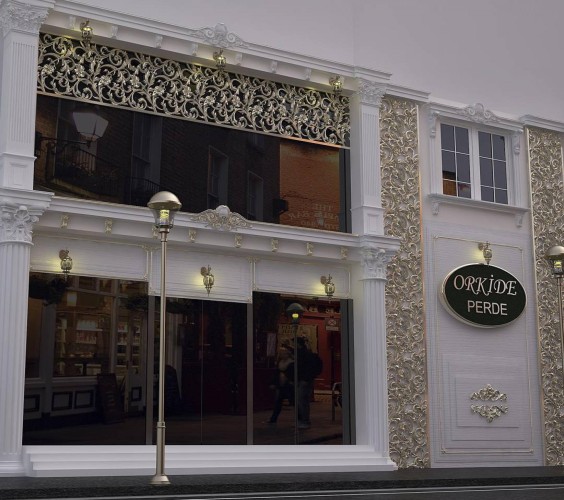
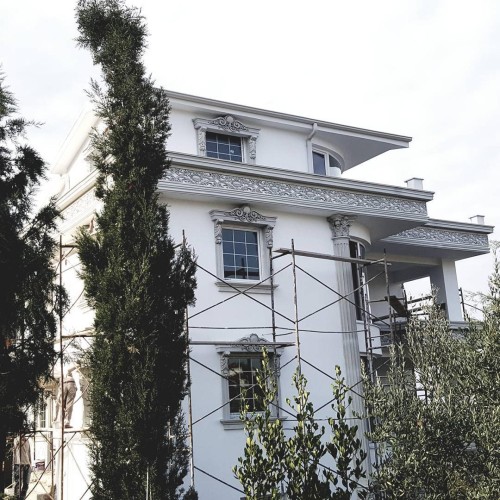

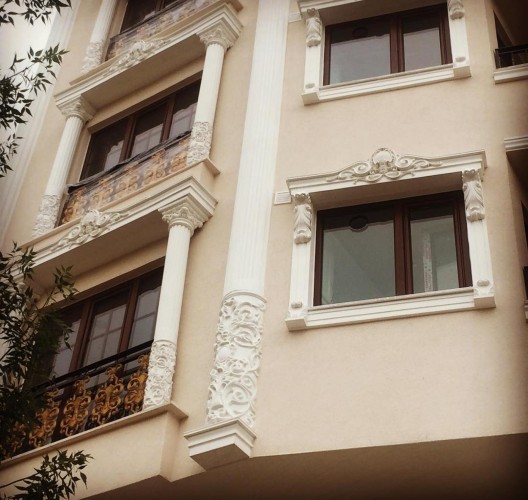
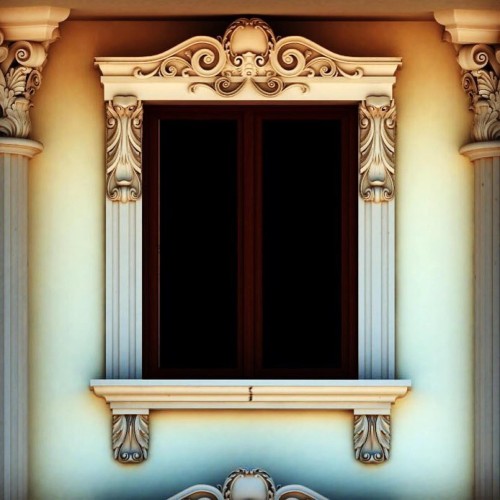
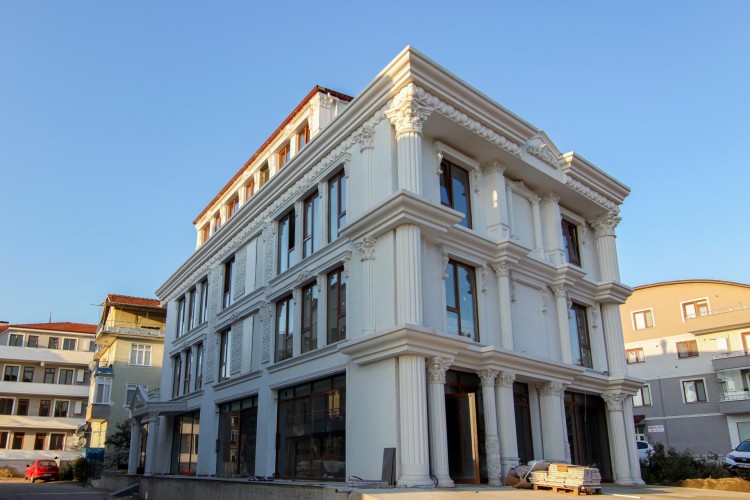

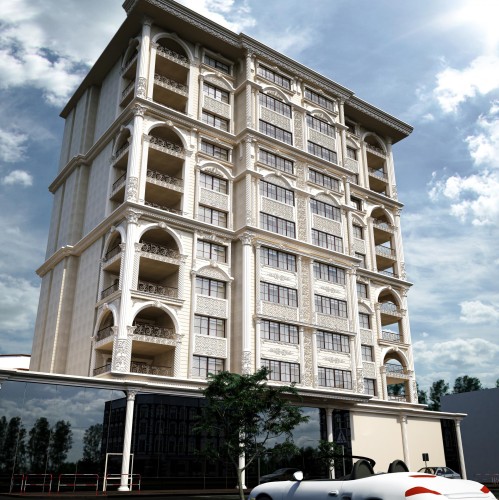
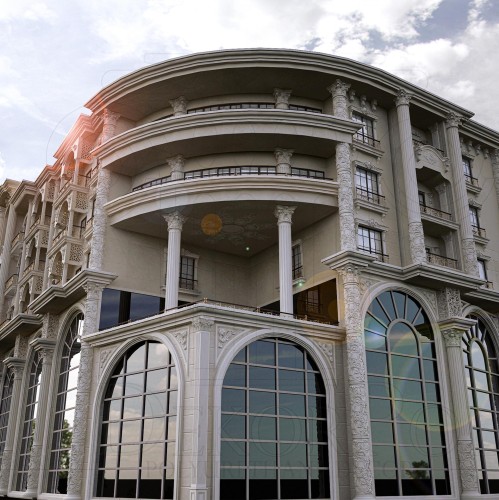

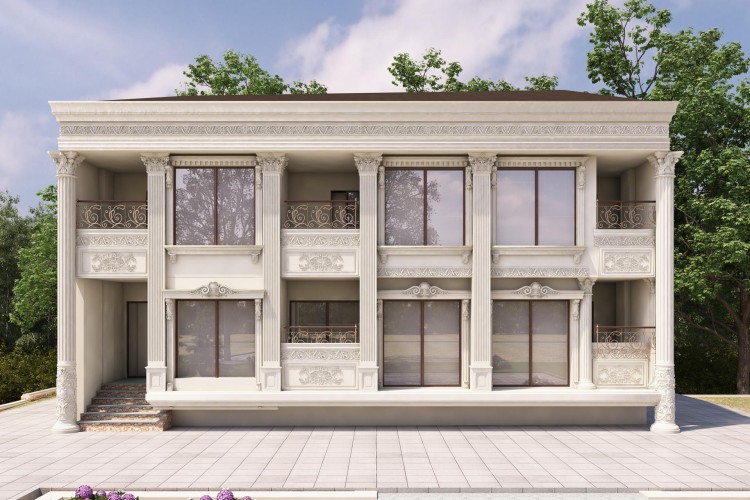
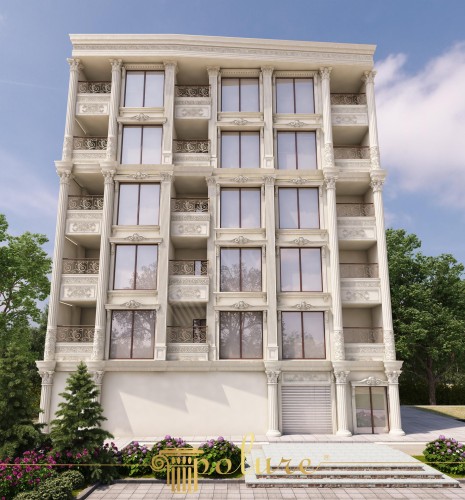



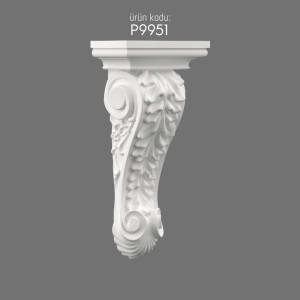
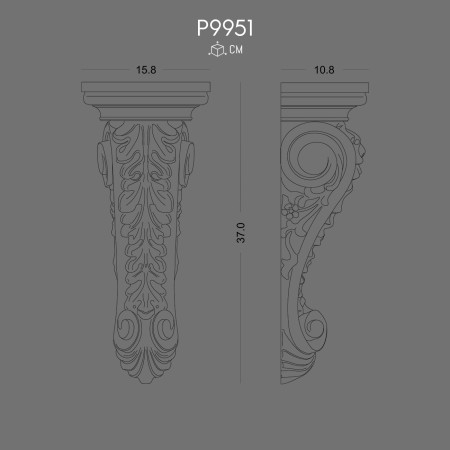


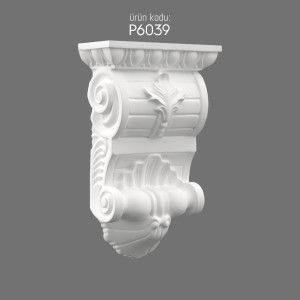
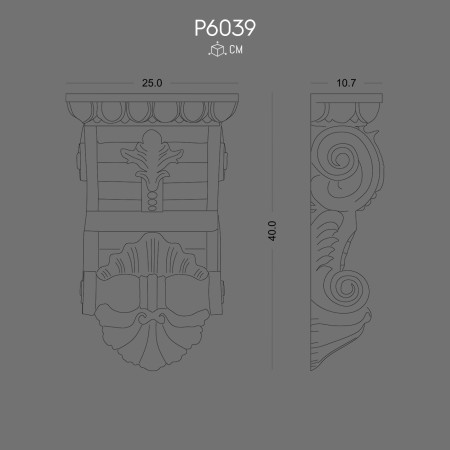

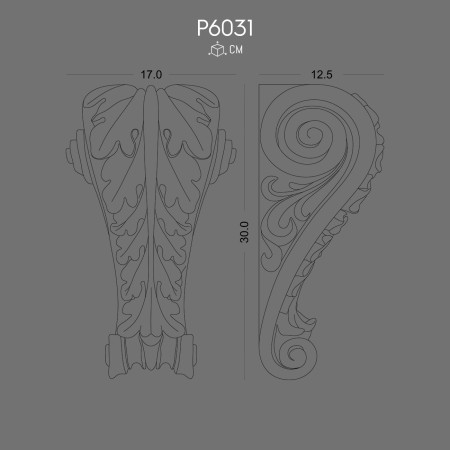

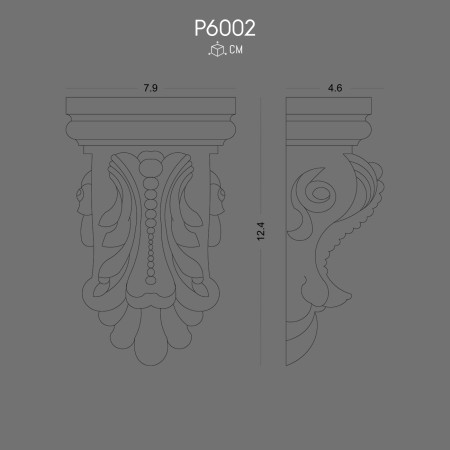

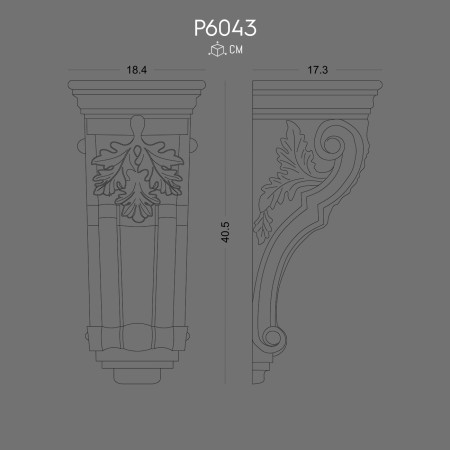
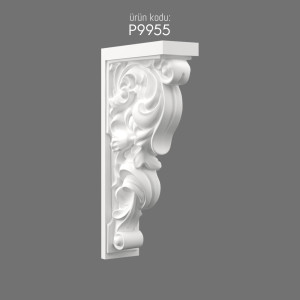
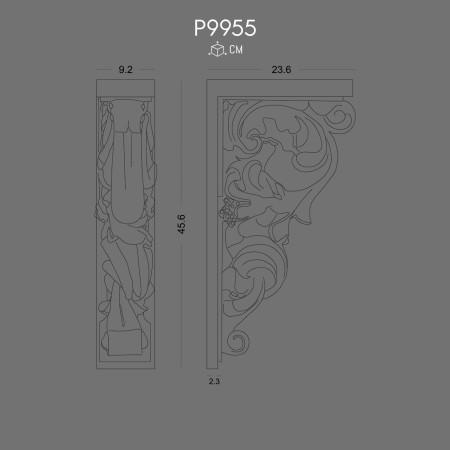
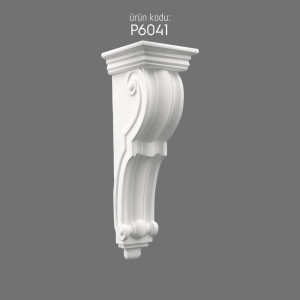
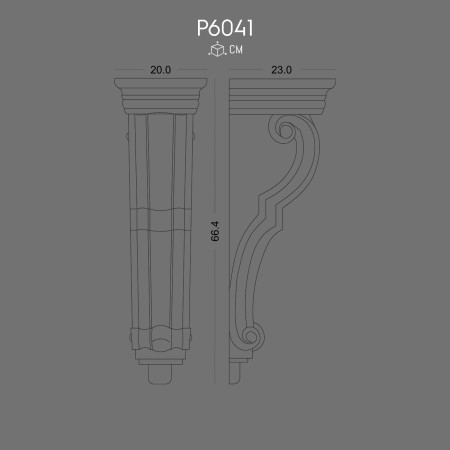
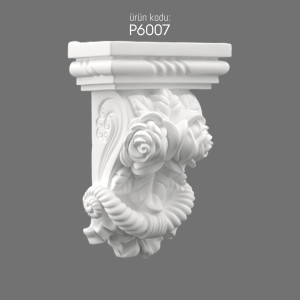
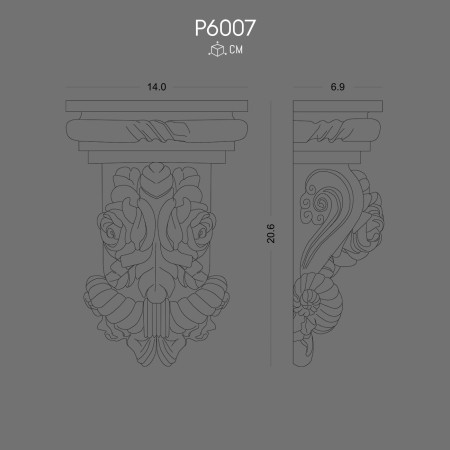
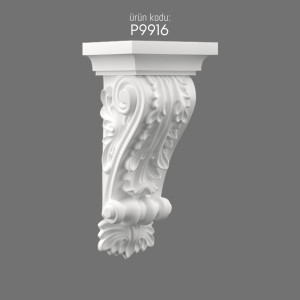
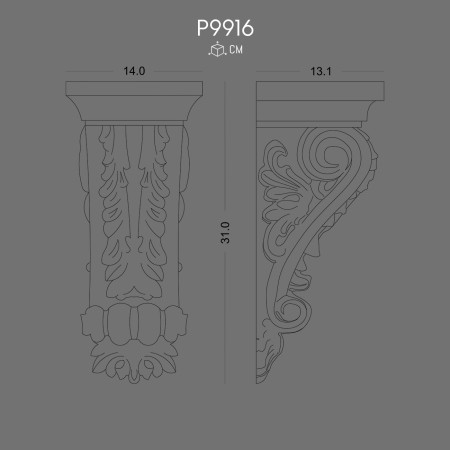
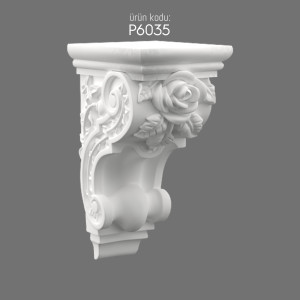
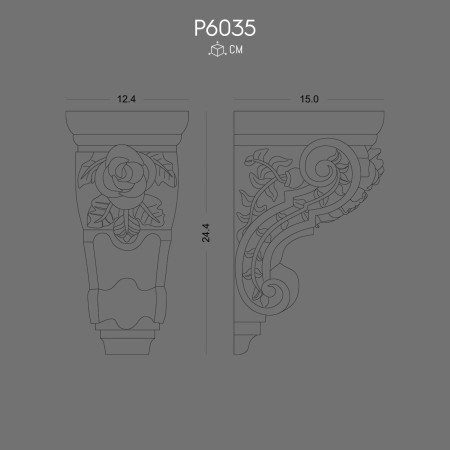

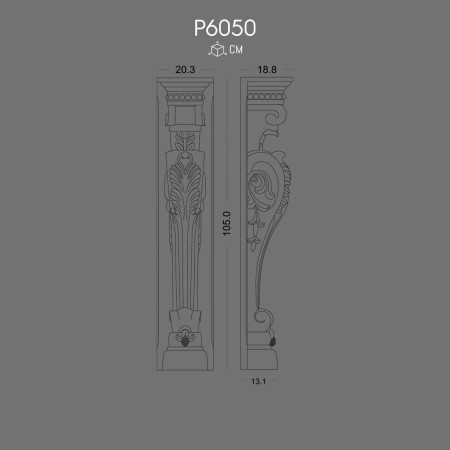
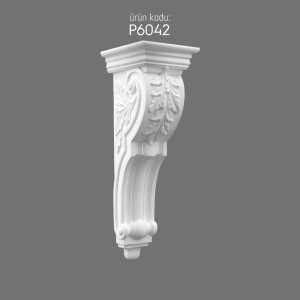



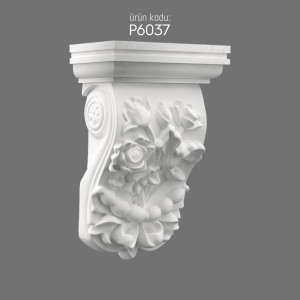
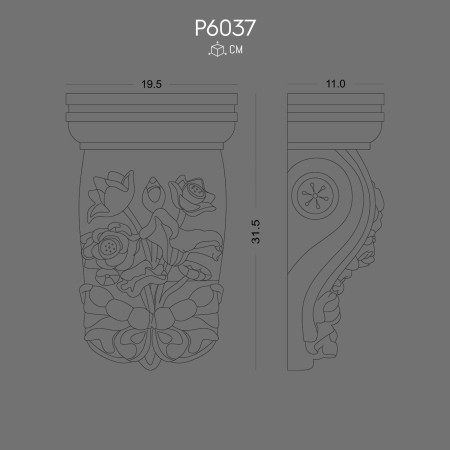
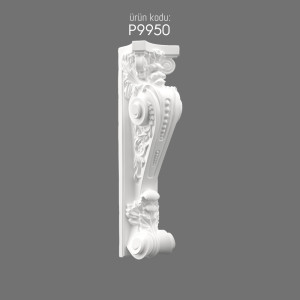
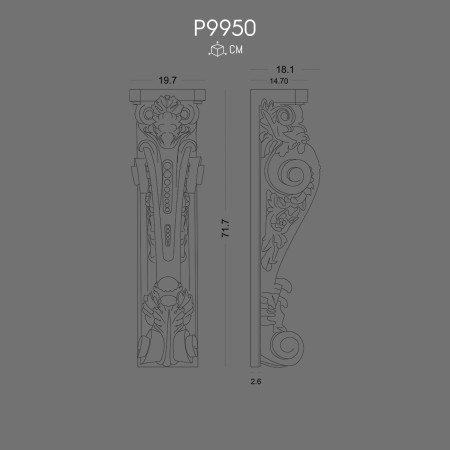
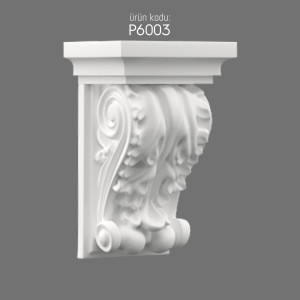
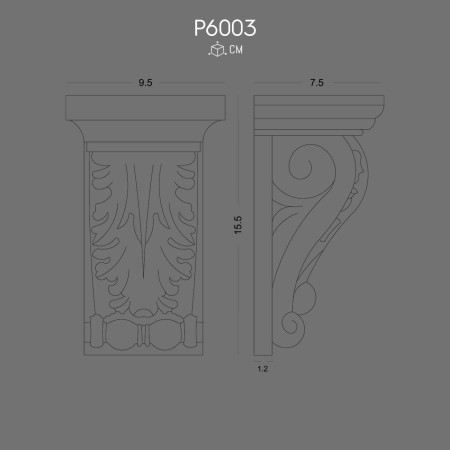
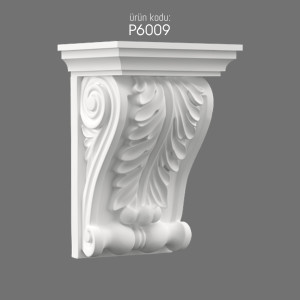
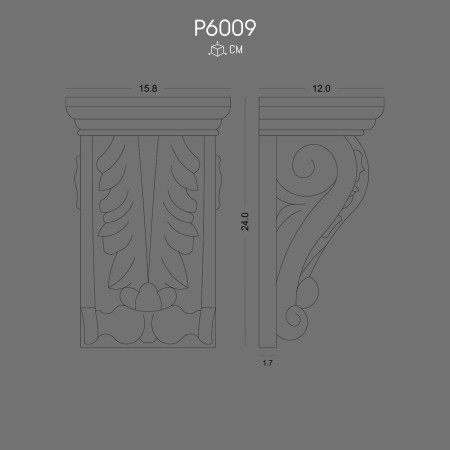

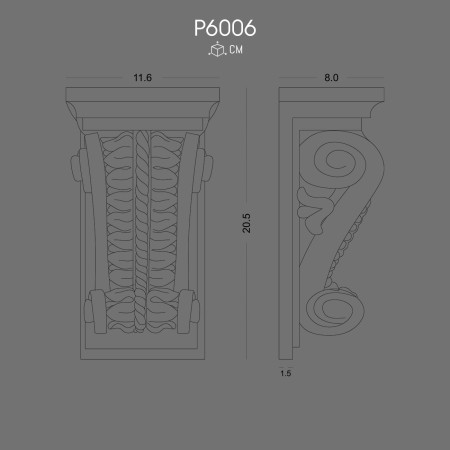
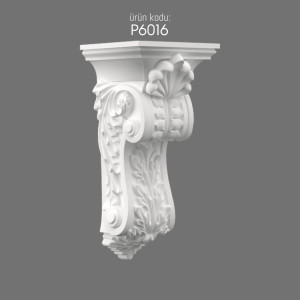
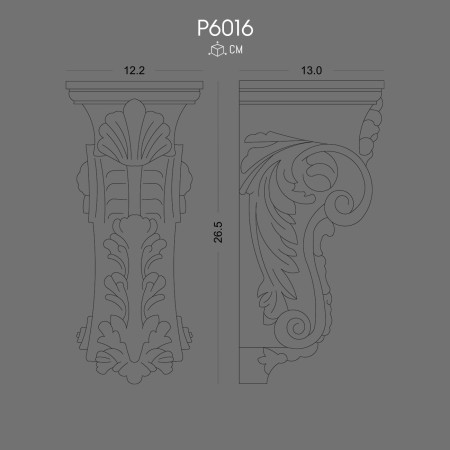
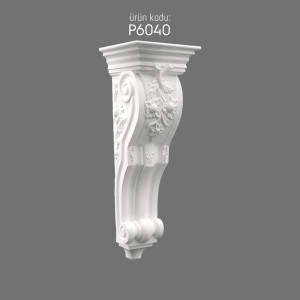
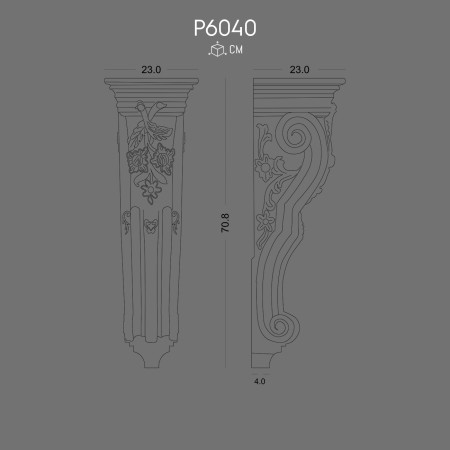
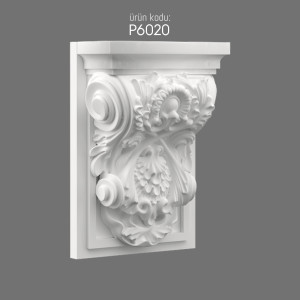

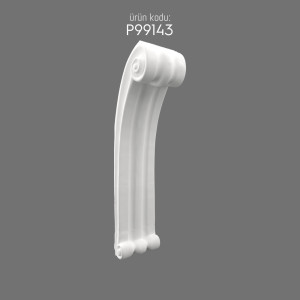
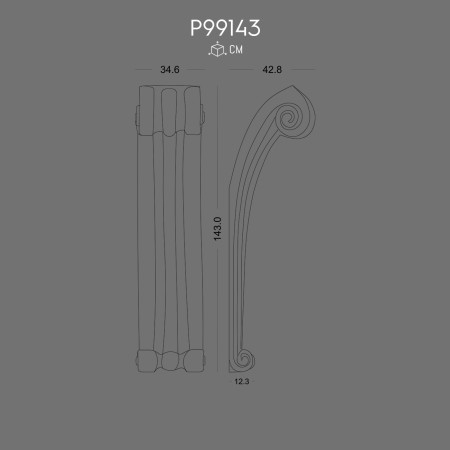
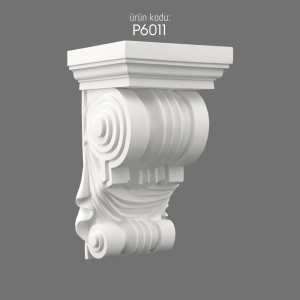
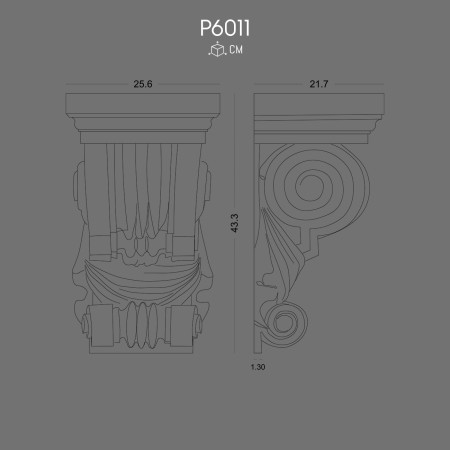
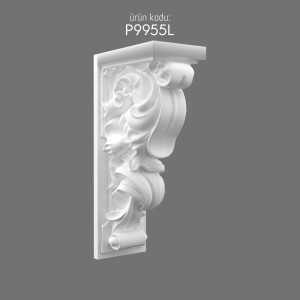
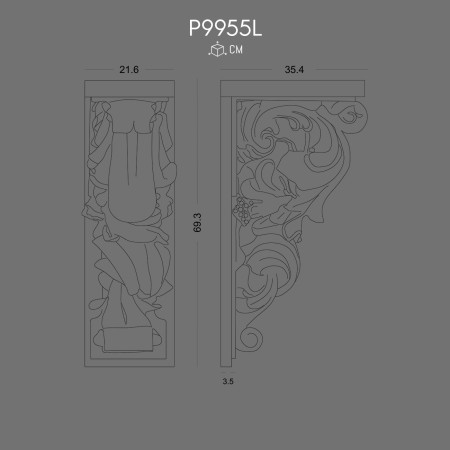
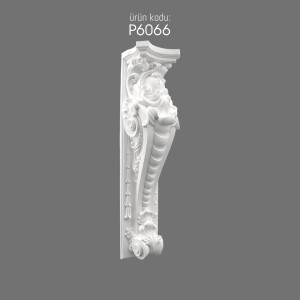
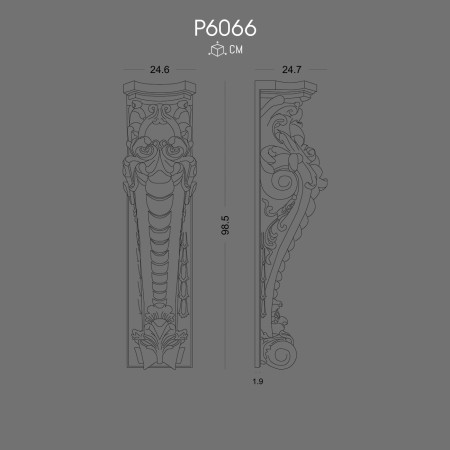

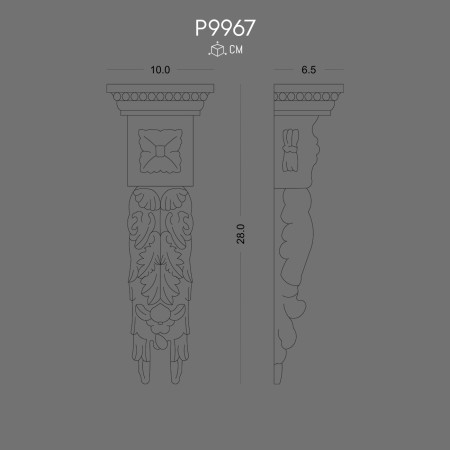

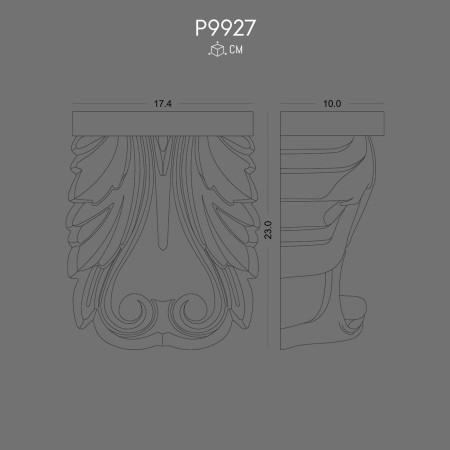
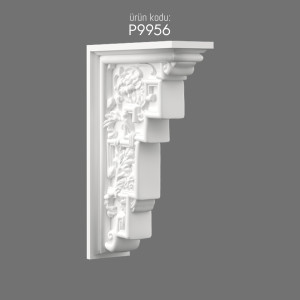
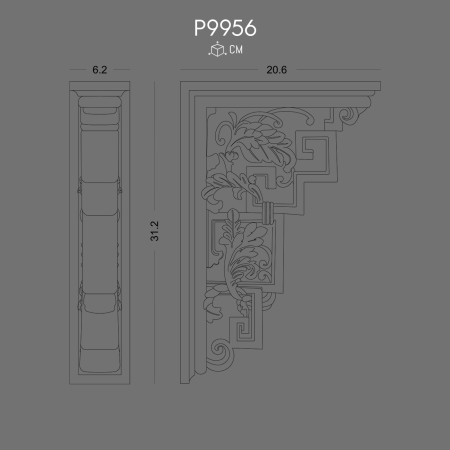
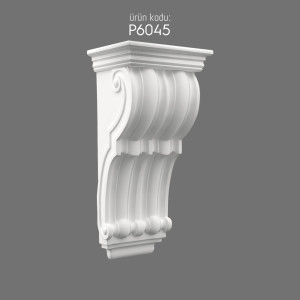
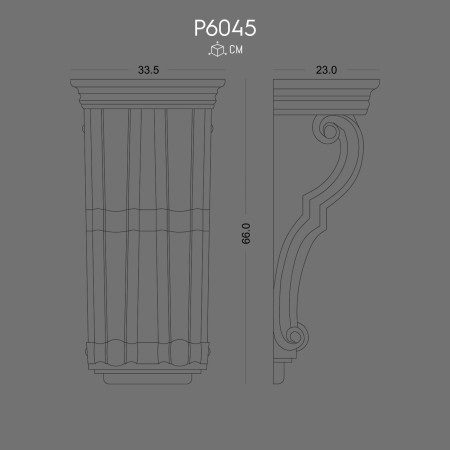
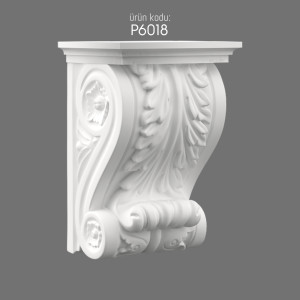
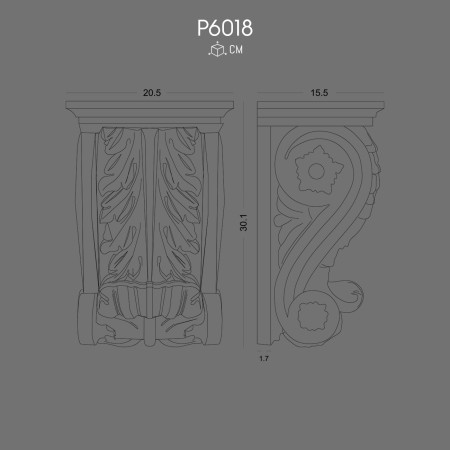
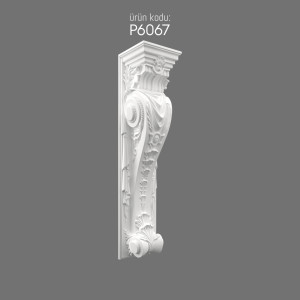
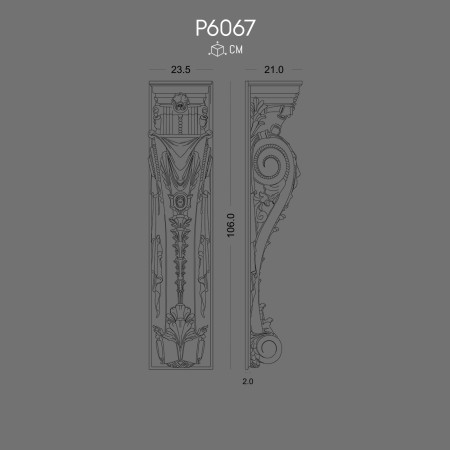
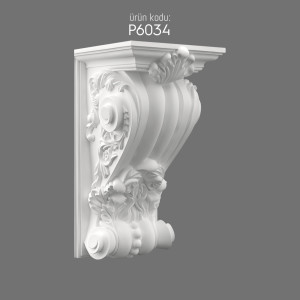
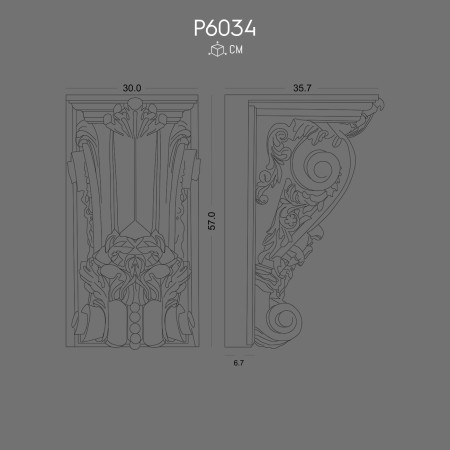
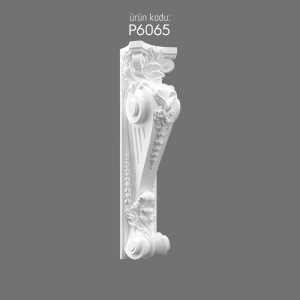
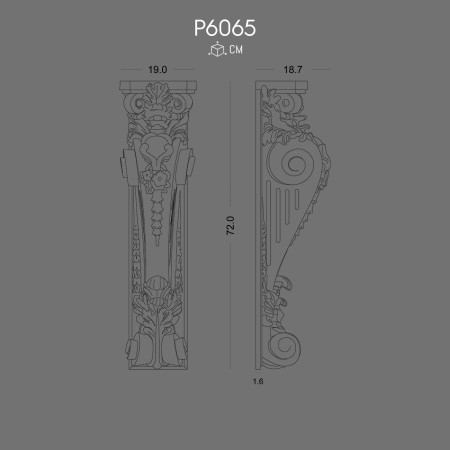
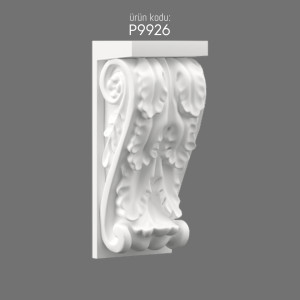
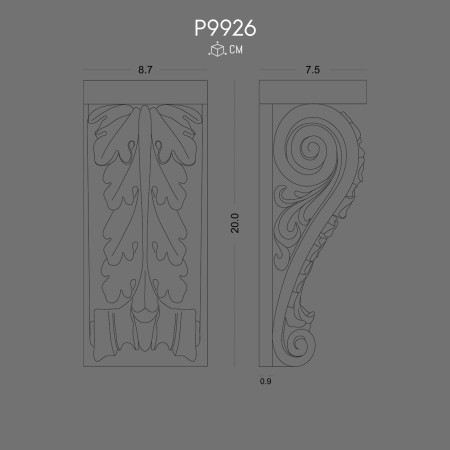
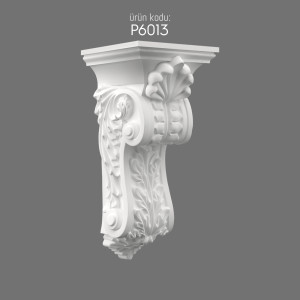
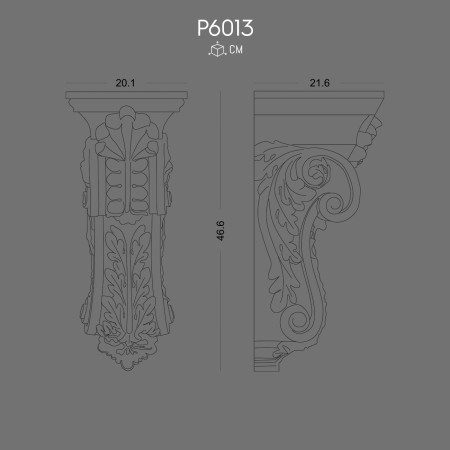
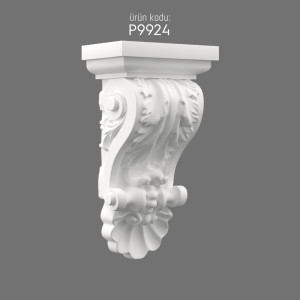
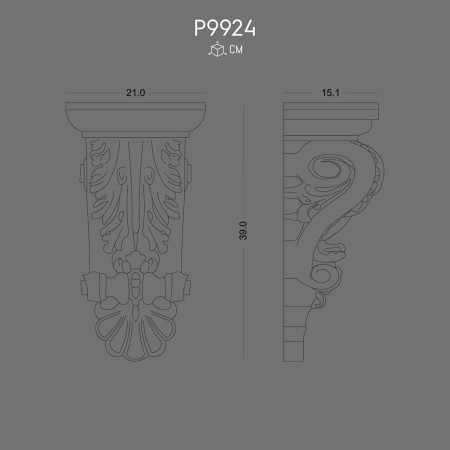
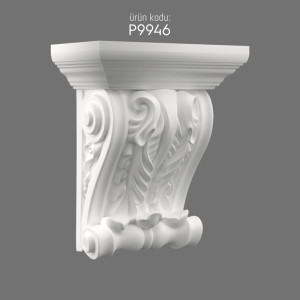
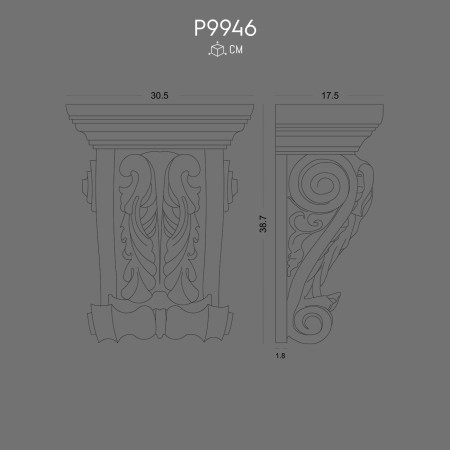

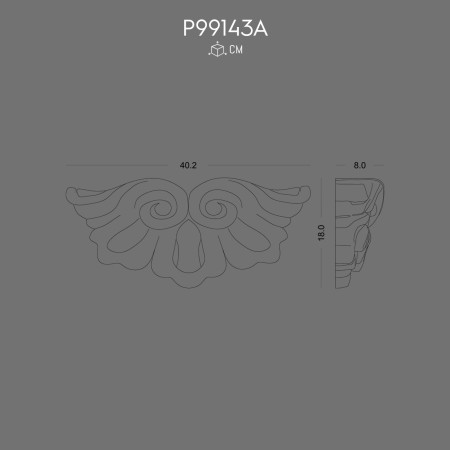











No reviews found for this product. Be the first to comment!